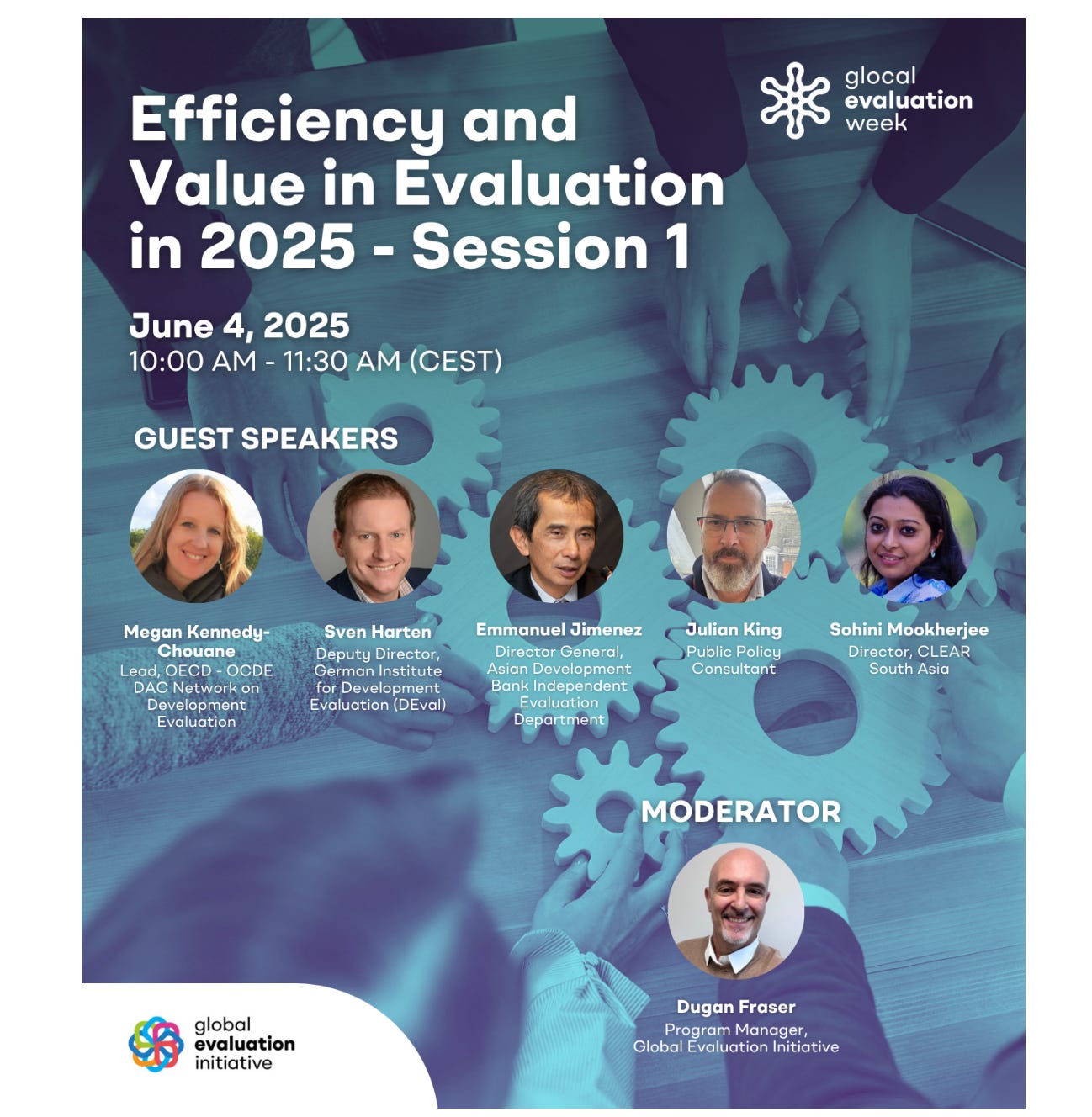Efficiency and Value in Evaluation in 2025
Sharing my contribution to a panel presentation at Glocal Evaluation Week
What is efficiency? How should we evaluate it? How is efficiency related to value? Last week I had the pleasure of joining a panel moderated by Dugan Fraser, with esteemed panelists Megan Kennedy Chouane, Emannuel Jimenez, Sohini Mookherjee, and Sven Harten (see bios at the end) to explore these questions.
Key themes from the panel overall:
The discussi…
Keep reading with a 7-day free trial
Subscribe to Evaluation and Value for Investment to keep reading this post and get 7 days of free access to the full post archives.


